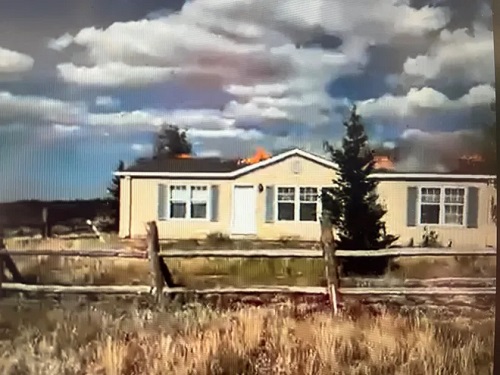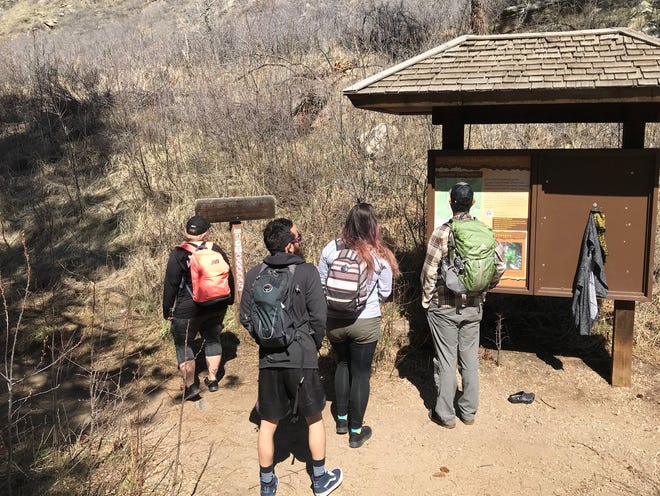8.31.22 – The Coloradoan (Fort Collins)
The Larimer Emergency Telephone Authority in Larimer County, Colo., has begun using NOCO Link, which allows callers to provide dispatchers with live video. So far, the tool has helped first responders rescue a hiker and determine the best response to a house fire.
Christopher Cawdrey was eating lunch at his remote home in far northern Larimer County when he noticed smoke coming over the hill in the direction of his neighbor’s house.
Once outside, he could see the house was on fire and quickly called 911.
The dispatcher asked his location and other critical questions, then asked if would be willing to livestream video from his cellphone of what he was seeing.
He agreed, and the dispatcher texted him a link. He clicked on the link and was able to walk around the burning home to show the dispatcher the fire in real time. The dispatcher relayed the video to emergency responders who could better assess the scene.
Because the house fire was near the Wyoming border, 90 minutes from Fort Collins, firefighters couldn’t save the home. Still, Cawdrey, who tried to extinguish the fire with a water hose, and emergency responders believe the new tool will prove invaluable.
“It was super useful, especially because we are in the boonies about a mile from the Wyoming border,’’ Cawdrey said. “It was terrible my neighbor’s house was burning down, but I was also concerned it was going to burn the grass and get into a draw and going to run all the way to Tie Siding.’’

NOCO Link is the latest tool Larimer Emergency Telephone Authority is using to link Larimer County emergency communication centers to livestream videos and photos from mobile callers with reception in real time.
In response to the house fire July 19 near the Wyoming border, Justin Whitesell, director of Larimer County Sheriff’s Office Emergency Operations, said Cawdrey’s videos was critical in helping determine resources necessary to respond.
He said those witnessing an event such a house fire often are under stress and the traumatic experience can cause problems in relaying an accurate account of the situation. He said videos and photos more clearly help responders assess the situation.
“It had been hot and dry and there was an initial concern the fire could turn into a catastrophic wildfire,’’ Whitesell said. “We were ramping up a bunch of resources and had Wyoming (responders) coming down and looking at what aircraft were available. Then when we were able to see the video, we could see the grass was green and the fire wasn’t spreading and so we could determine we didn’t need all those resources. That saved the county a lot of money.’’
How video sharing will work on a 911 call in Larimer County
Kimberly Culp, LETA chief executive officer, said when 911 dispatchers receive a call, callers might be asked if they are willing to share video and photos, depending on the situation. She said participation is voluntary and consent of the caller is required.
The consenting caller will receive a livestream link via text message enabling the caller to activate live video. The real-time data received can be shared with first responders on their computer screen while they are responding to the call.
She said the video call function does not provide emergency communication centers in Larimer County with access to contents or settings of a caller’s phone. She added that personal safety comes first and callers should provide videos and photos only if they can do so safely.
“Nothing replaces a first-party report of what is going on,” she said. “But this technology allows first responders to be able to get eyes on the scene much earlier while providing situational awareness to keep callers safe.”
Cawdrey said that was the case when he shared his video of the house fire.
“The area is off the grid and the fire was around solar panels and batteries, and I was trying to stop the fire with a hose,’’ he said. “When they saw that, they told me to put the water down so I wouldn’t get hurt.’’
Whitesell said the service was recently used on a rescue near the top of Greyrock Mountain in the Poudre Canyon. A hiker decided to take a shortcut by climbing down the rock and got stuck. He didn’t have a cellphone, but a climber came upon the man and called 911. He agreed to livestream where they were located on the mountain.

A Larimer County Search and Rescue member saw the video and knew where the two were and how to safely get the hiker down.
Culp said NOCO Link can be used in any emergency, including river rescues, floods, fires, active shooter situations and crimes in progress. The service is available to all LETA partners, including law enforcement, fire departments and emergency services throughout the county, she said.
Several companies offer the service, Culp said, and the county chose Prepared as its contractor. Culp said the basic service is free for 911 centers but the county added the ability to conference or share multimedia with first responders on their computer screens to enhance the effectiveness of the tool. She said for proprietary reasons, she could not share the cost of the service.
For more information, visit https://leta911.org/nocolink/.
